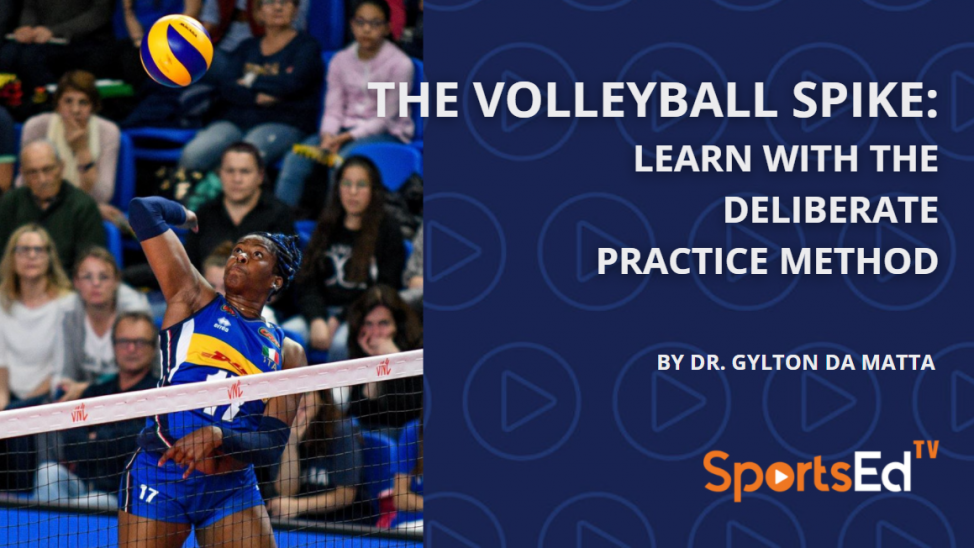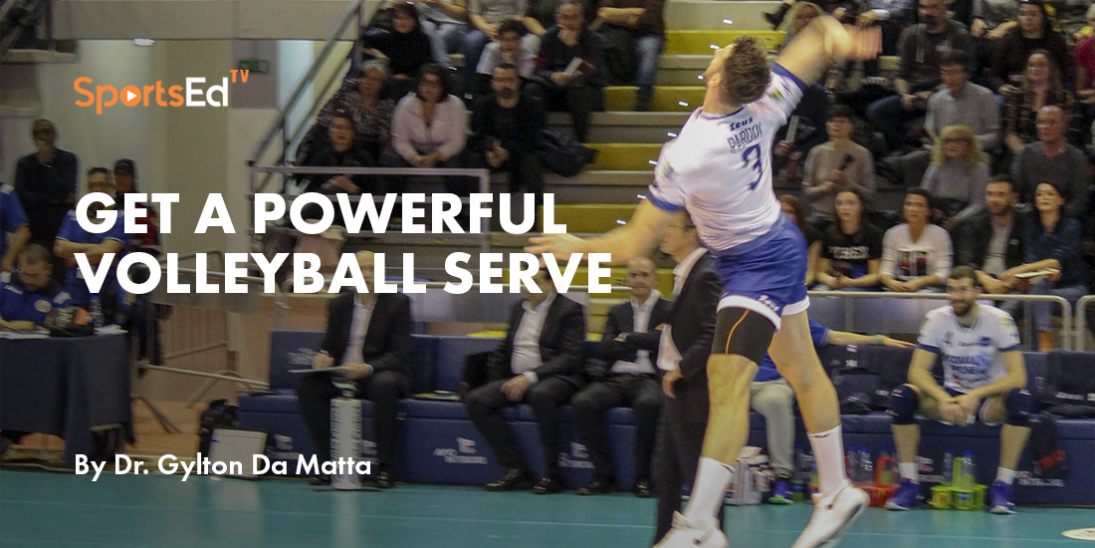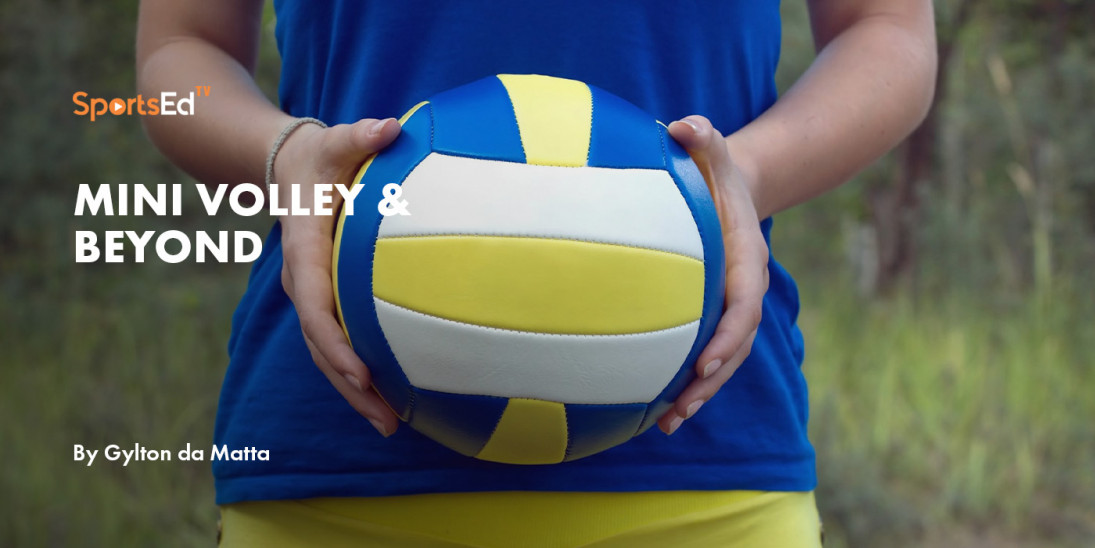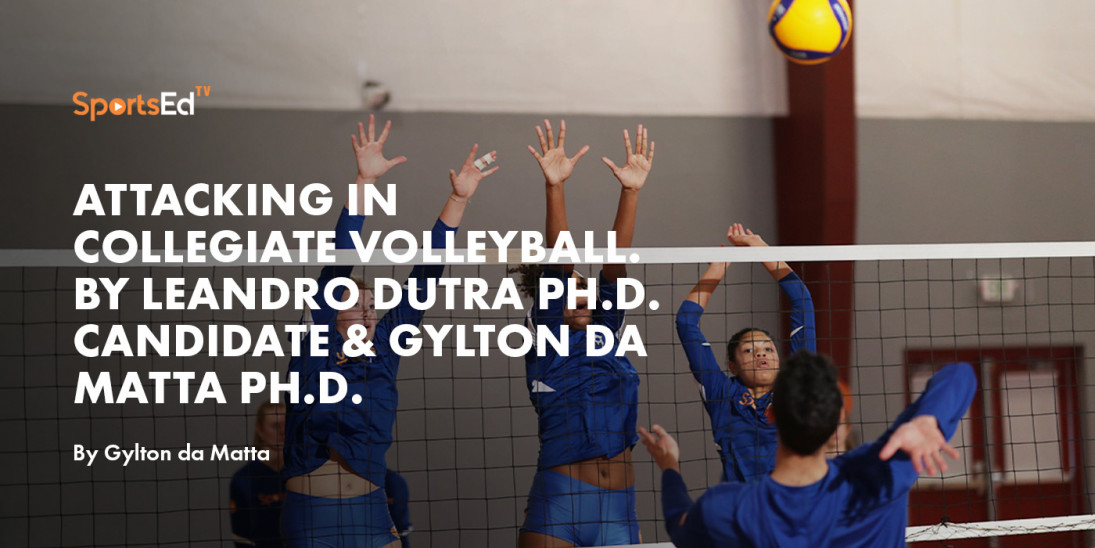Volleyball
Welcome and thanks for visiting...

Speak up! The Good VIBES of Learning English through Volleyball Instructional Videos

Any coach or athlete in a team sport can tell you that communication is important. Consider the role of listening and speaking on the volleyball court. Passers call the ball for serve receive, hitters shout plays to the setter, and the team and coach congratulate or console each other after each play. Successful gameplay depends on effective communication. We may take for granted that the players on our courts speak the same language with the same degree of proficiency, but let’s challenge that assumption and see what opportunities we have.
Around the world, hundreds of millions of people play volleyball. It is one of the most popular sports on the planet with almost 900 million participants. And, around the world, hundreds of millions of people are learning English. English is the language of many industries, including sport sciences, law, business, technology, medicine, and aviation. In each of these industries and many others, English plays a vital role in successful communications (and often, safety!), just as it does in sports. In fact, in 2015, 85% of the top elite volleyball coaches reported that if they knew the English of volleyball, they could be better coaches and coach in any professional league in the world.
On the volleyball court, speaking and listening skills are critical and must be automatic for players. Hesitation to speak or a miscommunication can cause a play to fail. This situation where athletes get automatic and immediate feedback from their communication is ideal from a language teacher’s point of view. Expert language teachers are always looking for ways to create authentic scenarios for communication. Language teaching scholars have developed various methods that may sound familiar to coaches and athletes. In addition to an effective conduit for learning languages, sports offer a common ground for a deeper human connection through a common passion. This human connection overcomes boundaries and surpasses the laws of grammar! Let us guide you through a few approaches to language learning and the connections which have inspired an opportunity for players and coaches around the world.
Let’s start with Task-based language teaching (TBLT). This style of teaching presents students with an authentic task such as preparing a presentation on a recent event that they must complete using the target language (Pica, 2008). Expertly designed tasks elicit particular language points (e.g., past tense verbs) so that students must use those in order to successfully complete a task. The goal to complete the task provides motivation for language learners. Consider the ways that experienced coaches design drills and activities for athletes to practice a particular skill, such as serving to a particular target. Athletes must use and practice serving skills to accomplish the task.
Next, there is Content-based Instruction (CBI) - this style of language teaching creates a “dual commitment” to learning language and content simultaneously (Stoller, 2008). For example, English learners might study a specific topic, such as weather, as the content from which their English learning takes place. They will learn vocabulary about weather systems, and they will read and listen to texts about how weather and climate affect people. They use their inherent interest in the topic at hand to motivate their language learning. In sports, consider how coaches often choose to emphasize how sports can help athletes develop characteristics such as persistence, commitment, teamwork, sportsmanship, and leadership. Most athletic programs have dual commitments to concurrently learning the sport and learning life skills.
There are also specific areas of English language teaching that focus on subsets of English needed for particular contexts, which encompass a variety of classifications from English for specific purposes and English for occupational purposes. While there is a general base of foundational English that all learners need, there is significant variety in how English is used in differing contexts. Think about a Korean commercial pilot using English to talk with an Egyptian air traffic controller versus a Turkish medical student reading journal articles on a specific illness written in English. Extend this concept to athletics where specific athletic skills or movements are needed for different sports. For example, the volleyball skill set is very different from that of a competitive swimmer. Even the language that volleyball players use is different from a swimmer. For instance, if the coach says “hit line” to a volleyball player, there is a clear meaning, but not to a swimmer. Conversely, the volleyball player might not be able to understand the instruction to do “10 50s on the minute, best and holding.” For an English learner, learning the language they will actually use is often much more motivating than learning only general English. Imagine trying to become a volleyball player, but your coach only has you running laps, doing agility drills, and lifting weights. You might become more physically fit and a better general athlete, but you will not acquire volleyball skills. More importantly, you might not want to come to practice if you do not get to play volleyball. Finally, when you get to the court for a match, you will be unprepared. We can extend this concept to language learning. We want to learn and practice the skills we need for real-life situations that we are likely to find ourselves in. Well-designed language learning experiences can make this happen!
With motivation often comes reduced inhibition. When athletes are engaged in the game, they may experience “flow” (Csikszentmihalyi, 1997), a pleasurable mental state in which one is immersed in an activity with a focus on a clear goal. Typically, that means you are having fun and not thinking about what you are doing; just doing it! This state of flow and the reduced feeling of inhibition is an ideal condition for language learning and one of the underlying assumptions of modern language teaching. Moreover, having the context of volleyball represents an inspiring motivation to learn English. In the classroom, we can do a lot to engage students, but I have never come close in the classroom to what is possible on the court. Perhaps because on court, people are always moving, talking, thinking and socially interacting. During gameplay, athletes use language automatically and naturally for an authentic purpose - to win the point! During practice, athletes listen carefully to coaches’ instruction to improve their ability in the sport, learn plays and strategies, and receive feedback on their performance. If we can teach athletes English at the same time as they are actively playing a sport, we can tap into this language learning motivation and ideal mindset for extraordinary results.
When coaches are able to use English, they can teach athletes about the sport and help them practice English. Volleyball programs that are run using English can recruit athletes from around the world. Bringing together a wider variety of athletes creates a diversity of experiences and skills that push sports (and the world at large) in a positive direction. Athletes learn English, a valuable professional skill, improve their volleyball skills, and may have opportunities to meet athletes from differing backgrounds. This is a win-win-win.
Looking at the situation through the eyes of a world-class volleyball coach and an experienced English teacher, the opportunity to harness the inherently motivating aspects of playing an internationally popular sport like volleyball for the dual purpose of developing athletes’ English ability is irresistible. Our own intuitions aside, interdisciplinary research suggests that foreign language vocabulary is learned and retained more effectively when learners are concurrently physically active (e.g., Liu et al, 2017). Combining the highly motivating context and content of sports with the apparent learning-conducive effects of exercise on the brain, learning English through a sport like volleyball is a compelling proposal.
As a sneak- peak into what we are planning, watch this video, paying careful attention to the language learning opportunities it contains.
Notice that when Dr. Da Matta explains how to spike, he uses metaphoric verbal cues, progressions, and scaffolding. The videos contain visual and written support of key words on screen, further promoting uptake of new vocabulary. He also integrates several sensory systems to communicate. In my observations of Dr. Da Matta’s instructional videos, I have noticed that as an English as a second language speaker and a university professor, Dr. Da Matta speaks clearly, uses a clear and intelligible pronunciation, and chooses widely understood words that can facilitate players and coaches learning the English of volleyball. With some expert language learning guidance from a volleyball-loving English teacher and carefully constructed tasks, these videos become a powerful source of language learning incorporating elements of the three methods mentioned above. Moreover, in an in-person training session, using English to learn and practice the drills demonstrated in these videos is a language learning opportunity plus a volleyball practice!
This global opportunity to learn English and build community has the potential to promote the acquisition of listening and speaking skills among English learning volleyball players. We strongly believe that volleyball has inspired some very good vibes among hundreds of volleyball coaches that have visited Dr. Da Matta’s volleyball camps, clinics, and club programs -- so much so that we are calling our English through volleyball program Volleyball Instruction for Better English Skills (VIBES) ©. This multimodal learning opportunity will incorporate authentic sport instruction videos from SportsEdTV with language support for learners, complemented by in-person camps co-led by top volleyball coaches and English language professionals.
Ready for more VIBES ©? Stay tuned for additional blog posts and information coming soon.
Sources
Csikszentmihalyi, M. (1997). Finding flow: The psychology of engagement with everyday life. New York: HarperCollins.
Liu F., Sulpizio S., Kornpetpanee S., & Job R. (2017) It takes biking to learn: Physical activity improves learning a second language. PLOS ONE 12(5): e0177624. https://doi.org/10.1371/journal.pone.0177624
Pica T. (2008) TaskâBased Instruction. In: Hornberger N.H. (eds) Encyclopedia of Language and Education. Springer, Boston, MA. https://doi.org/10.1007/978-0-387-30424-3_90
Stoller F.L. (2008) ContentâBased Instruction. In: Hornberger N.H. (eds) Encyclopedia of Language and Education. Springer, Boston, MA. https://doi.org/10.1007/978-0-387-30424-3_89





